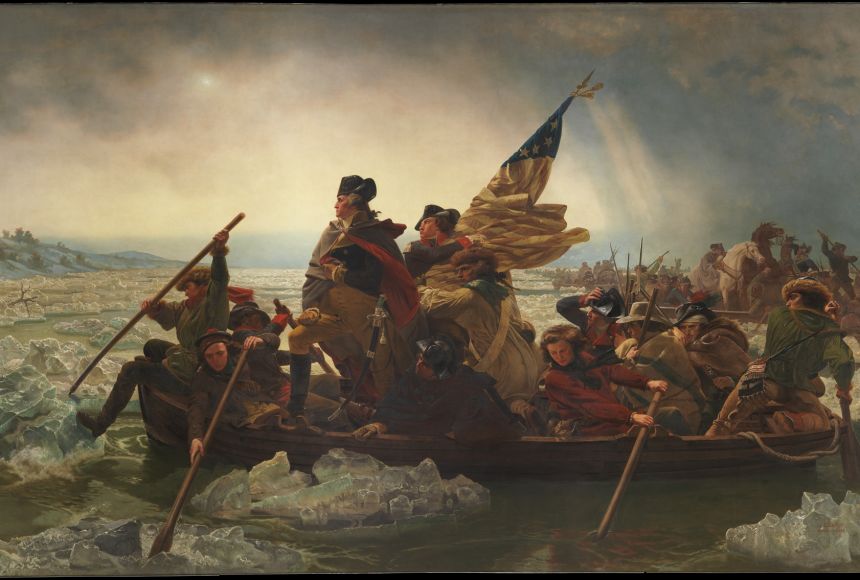ARTICLE
leveledARTICLE
George Washington Crosses the Delaware
George Washington Crosses the Delaware
This key moment of the American Revolution, made iconic in a portrait by Emanuel Leutze, was a major victory for General George Washington during the fight for the colonies’ independence. But its artistic depiction, a staple in classrooms across the country, does not tell the whole story about what actually happened that cold day in December.
Grades
3 - 12
Subjects
Social Studies, U.S. History, World History
Image
Washington Crossing the Delaware
More than a tribute to a turning point in the American Revolution, "Washington Crossing the Delaware" was created to inspire liberal reforms in the country where the painter was born, Germany.
Painting by Emanual Leutze

Media Credits
The audio, illustrations, photos, and videos are credited beneath the media asset, except for promotional images, which generally link to another page that contains the media credit. The Rights Holder for media is the person or group credited.
Director
Author
Production Managers
Program Specialists
Producer
Intern
other
Last Updated
October 19, 2023
For information on user permissions, please read our Terms of Service. If you have questions about how to cite anything on our website in your project or classroom presentation, please contact your teacher. They will best know the preferred format. When you reach out to them, you will need the page title, URL, and the date you accessed the resource.
Media
If a media asset is downloadable, a download button appears in the corner of the media viewer. If no button appears, you cannot download or save the media.
Text
Text on this page is printable and can be used according to our Terms of Service.
Interactives
Any interactives on this page can only be played while you are visiting our website. You cannot download interactives.